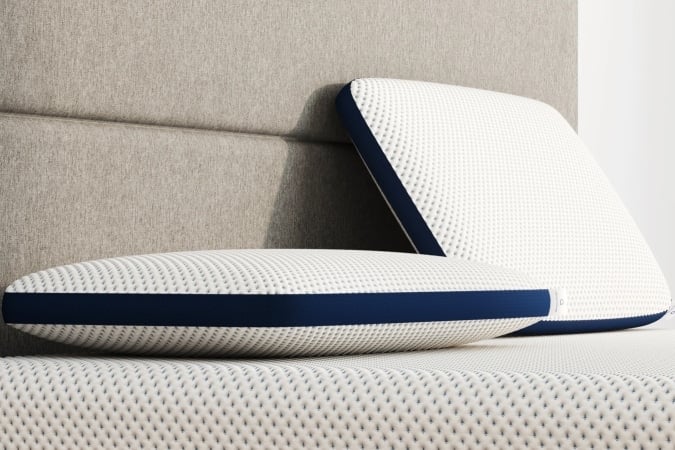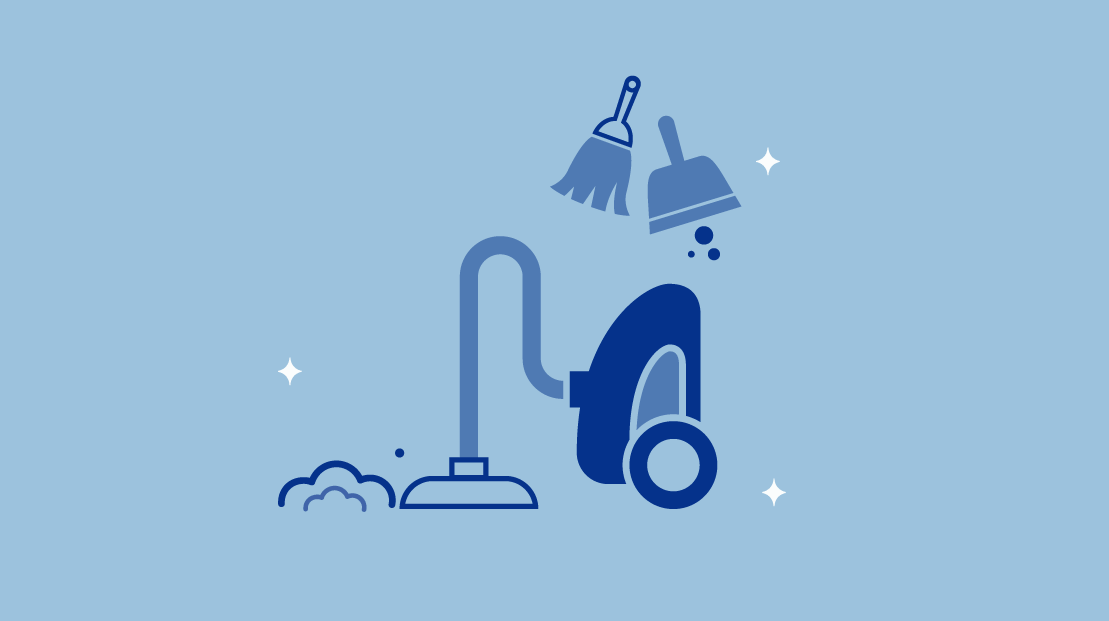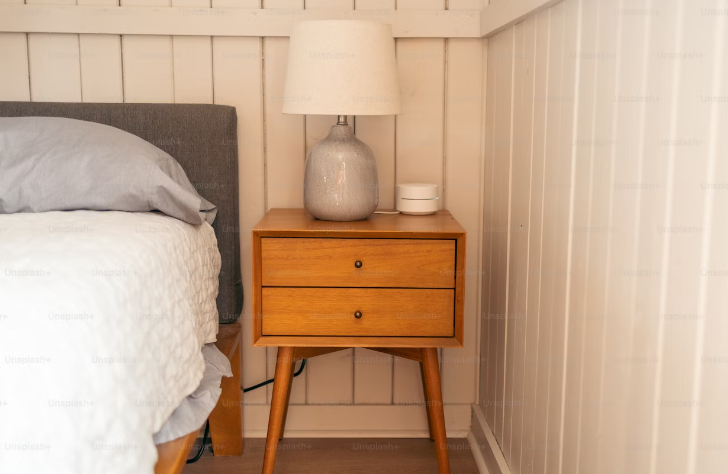Key Takeaways
- Pillow Hygiene is Crucial: Despite their coziness, pillows can accumulate dirt, body oils, saliva, dead skin cells, fungi, germs, dust mites, and allergens over time. Proper pillow hygiene is essential for a healthy sleep environment.
- Regular Cleaning Methods: To disinfect pillows effectively, you should start by cleaning your pillows before disinfecting them. Common household ingredients like baking soda and vinegar can be used to eliminate germs and odors. Fluffing pillows, spot cleaning stains, and using steam cleaners or enzyme cleaners are effective cleaning methods.
- Pillow Protectors and Replacement: Pillow protectors act as shields, preventing contaminants from reaching your pillows. Replacing your pillows every one to two years is recommended, especially if they show signs of wear, have unpleasant odors, or cause allergies.
Every night, you rest your head on your coziest pillow. It feels incredibly relaxing. A comfy pillow is essential for a good night’s sleep. But here’s the twist: no matter how soft and fluffy your pillows seem, they’re bound to gather dirt and other unwanted castoffs over time.
If you don’t take good care of them, your pillows can end up filled with body oil, spit, dead skin, yucky fungus, germs, dust mites, and lots of other allergens. Your pillowcase does help a bit, but it won’t shield you from all these hidden nasties.
So, what’s the solution? You should wash your pillows to keep them clean. If not, you might suffer from allergic reactions because of all the gross stuff lurking in your pillow. Remember, your pillow isn’t as clean as it looks.
Best Amerisleep Pillows
Quick Guide: A 30-Second Summary
| Best Pillow Overall | Amerisleep Comfort Classic Pillow |
| Best Adjustable Pillow | Amerisleep Flex Pillow |
| Best Dual-Sided Pillow | Amerisleep Dual Comfort Pillow |
How to Disinfect Pillows: Tips You Need to Know
In the quest for a restful night’s sleep, clean pillows play a crucial role. We’ve researched the essential tips on how to disinfect and wash pillows effectively to ensure your bedtime haven is free from hidden germs and allergens.
Clean Your Pillows Before Disinfecting
To prepare your pillows for disinfection, start by ensuring they are clean. Begin by following the manufacturer’s instructions or laundry care label symbols, if available, for your specific pillow type.
If not, feel free to consult our guide on washing pillows. When it comes to machine washing, consider the fill type and any necessary precautions to maintain your pillows’ quality and cleanliness.
Before washing your pillows, give your pillows a good shake or pat to remove dust and debris that may have accumulated before they have the potential to clog up your washing machine’s drain. It’s also a good idea to use a stain remover or rubbing alcohol to treat any stubborn stains, ensuring a thorough cleaning process and a fresh, stain-free result.
This initial cleaning step is essential to ensure that the disinfection process can be as effective as possible in keeping your pillows fresh and germ-free. Not all pillows can be washed, though, so you may have to skip this step.
See also how to wash a body pillow, which is quite larger than a standard pillow and requires slightly more specialized care.
Use Common Household Ingredients
Disinfecting your pillows is easy with everyday household items. Consider using ingredients such as baking soda or vinegar to effectively eliminate germs and odors. For decorative pillows that can’t go in the washing machine, sprinkle some baking soda on them, as you would do to deodorize a mattress, and then vacuum it off.
You can load pillows in the washing machine, using a gentle cycle and washing soda for a thorough clean. These common household ingredients can work wonders in keeping your pillows fresh and germ-free.
Fluff Pillows Often
Keep your pillows in great shape by regularly fluffing them up. Whether they’re feather pillows or standard bed pillows, fluffing pillows help maintain their shape and ensure better coverage when you disinfect them.
Spot Clean Pillows
Address any stains on your pillows by spot-cleaning them. Then, use a fabric-safe antibacterial spray to kill any remaining germs. Here are some potential cleaners for common stains:
- Urine: Vinegar, water, baking soda. See also how to get urine stains out of a mattress.
- Blood: Baking soda, cold water. See also how to get blood stains out of a mattress.
- Sweat: Hydrogen peroxide, baking soda. See also how to get sweat stains out of a mattress.
Tackling stains on your pillows with spot-cleaning and using an antibacterial spray is a smart way to ensure a clean and hygienic sleep environment. Remember, for hand washing afterward, follow the standard advice of washing with soap and hot water for at least 20 seconds to remove pathogens effectively.
Utilize a Steam Cleaner
Using a steam cleaner is a powerful method to disinfect pillows effectively. The steam can reach deep into the fabric, eliminating germs. But remember to air dry your pillows first or consider taking them to a professional for a dry cleaning.
Kill Germs with an Enzyme Cleaner
You can harness the power of enzyme cleaners to eliminate germs and banish odors from your pillows. These cleaners work by breaking down organic matter, making them highly effective at deterring bacteria in the bed.
For best results, use them with cold or warm water and consider adding dryer balls to ensure a thorough and efficient cleaning process. As a bonus, dryer balls are a great way to fluff up a pillow.
Dry Pillows Under Heat
To make sure all those remaining germs are gone, properly dry your entire pillow under heat. You can achieve this by placing it in the sun or using a hot setting in the dryer, an essential step in the cleaning method.
Use Pillow Protectors
Pillow protectors serve as a protective shield, stopping dust, allergens, and germs from reaching your pillows. They work much as a mattress protector does. Protectors are a smart choice to enhance cleanliness, especially when you need to spot clean stains or prevent excess moisture from seeping into your pillows.
Vacuum Foam Pillows
For foam pillows, grab your vacuum cleaner and attach the upholstery attachment to effectively remove trapped dust and particles. This simple step will help keep your foam pillows clean and comfortable.
When Should I Replace My Pillow?
We suggest replacing your pillow every one to two years. Frequent pillow replacements promote optimal comfort, support, and cleanliness, preventing buildup of allergens and microbes.
Here are some signs it’s time to get new pillows:
- Your pillows are lumpy, flat, or misshapen: The filling inside is compressed and no longer provides support. Natural materials like down and feathers tend to compress over time, and sometimes feathers escape the pillow even by pokig through the fabric.
- You notice odors: Pillows absorb oils, sweat, and hair products that can lead to built-up odors even after washing. Foam and polyester pillows are more prone to odors than natural fill pillows.
- You wake up with neck or back pain: A too-soft, unsupportive pillow can cause pain and discomfort. This is a sign the pillow shape has broken down.
- Your allergies have gotten worse: Dust mites and dead skin cells build up in pillows over time. This can worsen allergies and asthma symptoms.
- You see visible yellow stains: Body oils and sweat can leave behind yellowish stains on the pillowcase and pillow itself.
- Your pillow is over 5 years old: Most pillows should be replaced every 1-2 years. If your pillow is over 5 years old, it’s definitely time to get a new one.
More Bedding Cleaning Guides
Maintaining a clean sleep environment goes beyond just making your bed, after all. Here are some of our guides on how to wash specialty bedding items:
- How to Wash a Quilt
- How To Wash a Crochet Blanket
- How to Clean a Comforter
- How to Wash a Duvet
- How to Clean an Electric Blanket Safely
- How to Clean a Weighted Blanket
- How to Make Sheets White with Household Items
- How to Clean an Upholstered Bed Frame
- How Often Should You Wash Your Sheets?
- Can You Wash Sheets with Clothes and Other Items?
- How Often Should You Wash Your Mattress Protector?
- How Long Does It Take to Dry Clean a Comforter?
In our experience, we’ve also found it’s best to have a mattress protector. It can save you from needing to consult one of our specialty mattress cleaning guides after an accident or spill, and keep pests and other allergens out, too.
See also:
- How to Clean Vomit from a Mattress
- How to Get Poop Stains out of a Mattress
- How to Remove Coffee Stains from Your Mattress
- How to Remove Makeup Stains from Mattresses
- How to Remove Rust Stains on a Mattress
- How to Dry a Wet Mattress After Water Damage
- How to Get Rid of Bed Bugs in a Mattress
- How to Spot Mold on Mattress
- How to Get Lint Balls off a Mattress
- How to Clean a Dusty Mattress
- How to Fix a Ripped Mattress
FAQs
Why does your pillow turn yellow?
The primary reason that pillows are yellow is the accumulation of sweat, oils, and dead skin cells from your body, which can seep into the pillow fabric. Plus. exposure to air and light can cause natural oxidation of the pillow’s materials, leading to discoloration.
Sometimes, the use of certain skincare products from a nighttime skin routine or lingering hair products can transfer onto the pillow and contribute to staining. To prevent yellow stains, it’s essential to wash pillows and pillowcases regularly. Washing pillows frequently can help keep any yellow stains at bay.
How do you deep-clean a pillow?
Deep cleaning of a pillow depends on its material. For synthetic down alternatives or shredded foam pillows, you can usually machine wash them following the care instructions on the pillow’s tag. It’s often best to have them professionally cleaned for feather or down pillows.
Crucially, solid memory foam pillows should not be submerged in water. Instead, spot-clean them with a mild detergent and water.
What shouldn’t I clean a pillow with?
Avoid using harsh chemicals, bleach, or strong detergents when cleaning pillows. These can damage the pillow materials and cause them to break down faster.
Also important, do not submerge memory foam pillows in water, as they can absorb moisture and take a long time to dry properly. A pillow retaining too much moisture can potentially lead to mold or mildew growth. Instead, spot clean memory foam pillows as needed.
Can bacteria live in pillows?
Yes, pillows can harbor bacteria, dust mites, and other microorganisms over time, especially if they are not properly maintained. These microbes can accumulate from sweat, skin cells, and other contaminants. Bacteria in the bed can also flourish from these cast-offs, which is why it’s important to use protective bedding.
To combat the presence of germs in your pillows, we suggest regular washings, using pillow protectors, and allowing pillows to air out in the sunlight as appropriate. Another tip is to keep a well-ventilated room.
How often should I wash pillowcases and pillows?
Pillowcases should ideally be washed every week to prevent the buildup of sweat, oils, and bacteria. Pillowcases act as a barrier between your face and the pillow itself. So, it’s important to keep this barrier clean as a healthy sleep surface.
As for the pillows, we recommend washing them every three to six months, but this can vary depending on personal habits, allergies, and the type of pillow. Pillow protectors can extend the time between washes by preventing contaminants from reaching the pillow.
Conclusion
Maintaining a clean and germ-free pillow is essential for a healthy and restful night’s sleep. By following these practical tips, you can ensure that your pillows stay fresh, cozy, and free from hidden allergens, providing you with the comfort you deserve.
About the author
April Mayer is a sleep expert and writer with a degree in exercise physiology. She has dedicated her career to exploring the relationship between sleep and productivity. Her insightful articles, such as "The Surprising Way Your Mood Might Be Messing With Your Productivity" and "Wake Up to More Productive Mornings," have been featured in reputable publications like Forbes, Greatist, Real Homes, Thrillist, Tom's Guide, and Eat This, Not That. With a passion for helping others lead more productive lives through restful sleep, April offers valuable expertise on foods and vitamins for better sleep. As a trusted member of the Early Bird team since March 2020, she continues to provide informative and well-researched content.
View all posts





